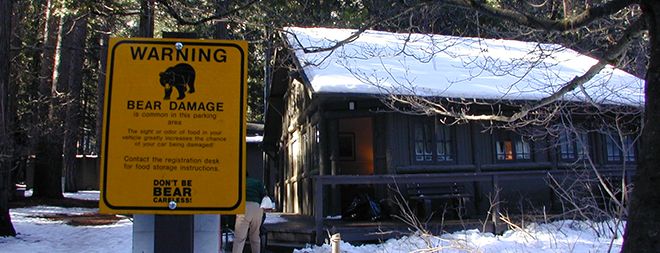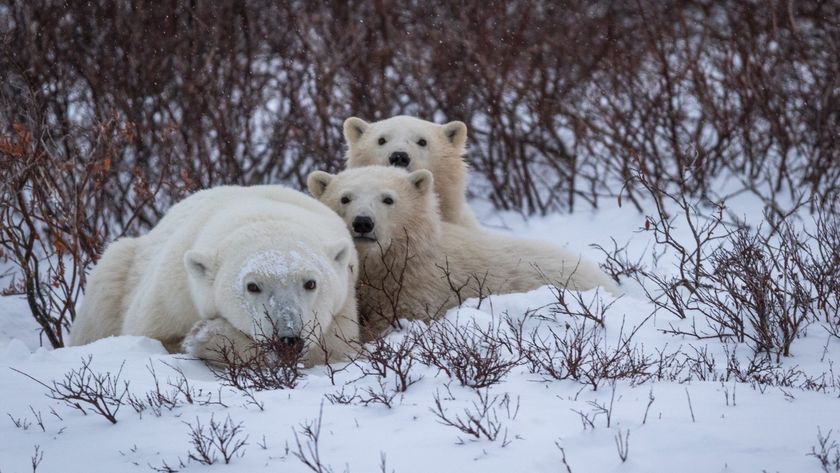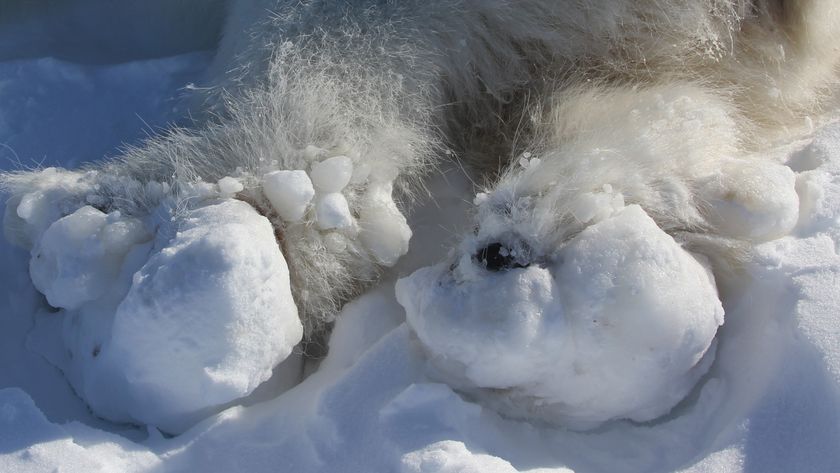Keeping Bears Away From Humans Works -- In Some Places

(ISNS) -- One of the thrills of visiting America’s national parks and wildlife preserves in the West is coming in contact with bears.
In most places, these encounters are harmless, but both the people and the bears can get hurt or even killed. Usually, it's humans' food that lures bears to approach people.
A study published in the current issue of journal Frontiers in Ecology and the Environment suggests that the National Park Service’s attempts to minimize those potentially hazardous meetings are working -- at least in Yosemite National Park.
The efforts to keep the Yosemite bears from getting food brought in by park visitors have worked so well that the bears' diets have returned to what they were before large numbers of humans showed up, according to scientists at the University of California, Santa Cruz.
The bears at Yosemite are small black bears. Some females weigh as little as 120 pounds. Males range up to 350. No one knows how many there are in the park but John Hopkins III, an ecologist at the University of California, Santa Cruz and the lead author of the paper, estimates around 300.
The situation became serious shortly after the park was established in 1890, and bears learned that the park's hotels deposited edible garbage in dumps. The bears were drawn to the dumps because they quickly learned that human food has a higher calorie count than what they were eating, said Hopkins. They need to acquire as much body mass as possible for their winter hibernation.
But, the bears were considered a nuisance, and the people running the concessions killed as many as they could.
Sign up for the Live Science daily newsletter now
Get the world’s most fascinating discoveries delivered straight to your inbox.
“It’s not that the bears are doing anything wrong,” Hopkins said. “It’s just that they learned the food has a higher calorie count and doesn’t require too much effort.”
In 1923, the park service opened “feeding areas” where the bears could get a free meal and the tourists could safely see the bears. In 1972, the feeding areas were closed and the bears spread out to campgrounds to forage for food left in coolers, on the ground in campsites or in dumps, or in garbage cans that the bears -- which are very bright -- learned to open.
The current bear management program began in 1999. The park service installed animal-proof food storage receptacles throughout the park, and began educating the tourists not to feed the bears. Problem bears were not shot but were transported to a different part of the park, away from possible food sources.
Bears are omnivorous, but their normal diet in California consists of berries, insects and occasional road kill.
“These [bears] are primarily foraging for plants,” Hopkins explained. They are not great predators, he said.
To see whether the 1999 program worked, Hopkins, Paul Koch, Jake Ferguson, and Steven Kalinowsky went to museums and collections and examined 52 bear skulls and ten pelts to take hair and bone samples from bears that lived throughout the last century.
Bears that feed on human food have high rates of the relatively rare nitrogen 15 and carbon 13 isotopes in their hair, the signs of a meat and corn-based diet like ours, he explained.
The scientists found that the diet of current bears is now the same as bears that lived between 1915 and 1919, before the mass influx of humans and the opening of the bear-feeding areas.
Ironically, bears that eat human food tend to be healthier, larger and reproduce better than bears that do not. But they also tend to get shot more frequently because they approach more humans. It's a tradeoff, Hopkins said.
If the Yosemite black bears are too laid back to be much of a menace (no one has ever been killed by one in Yosemite), the same cannot be said for bears in places like Alaska, where bears can weigh more than two tons, stand more than 10 feet tall on their hind legs, and can outrun a horse.
Grizzlies in Alaska (they are called brown bears there) and polar bears are among the most dangerous animals in the world. In some places where bears roam free school buses are followed by police cars, schools raise flags when a bear has been spotted nearby, and no one leaves a town or village without a rifle. There is almost one bear death each year in the state.
Mark Bertram, a wildlife biologist at the U.S. Fish and Wildlife Service in Fairbanks, who carries a 12-gauge shotgun with him when he studies bears in the Yukon Flats National Wildlife Refuge, said that even black bears there, which are about the same size as the ones in Yosemite, have been known to kill humans. They also are major predators of the moose population, spending part of the spring hunting and eating moose calves.
The city of Anchorage is home to both grizzlies and black bears. Like Yosemite, it also has rules to reduce bear-human interaction, including how and where garbage is stored. Nevertheless, bear attacks remain one of the risks of jogging in city parks.
Unlike tourists in Yosemite, “everyone in Alaska is educated about bears,” Bertram said.
Inside Science News Service is supported by the American Institute of Physics. Joel Shurkin is a freelance writer based in Baltimore. He is the author of nine books on science and the history of science, and has taught science journalism at Stanford University, UC Santa Cruz and the University of Alaska Fairbanks. He tweets at @shurkin.












